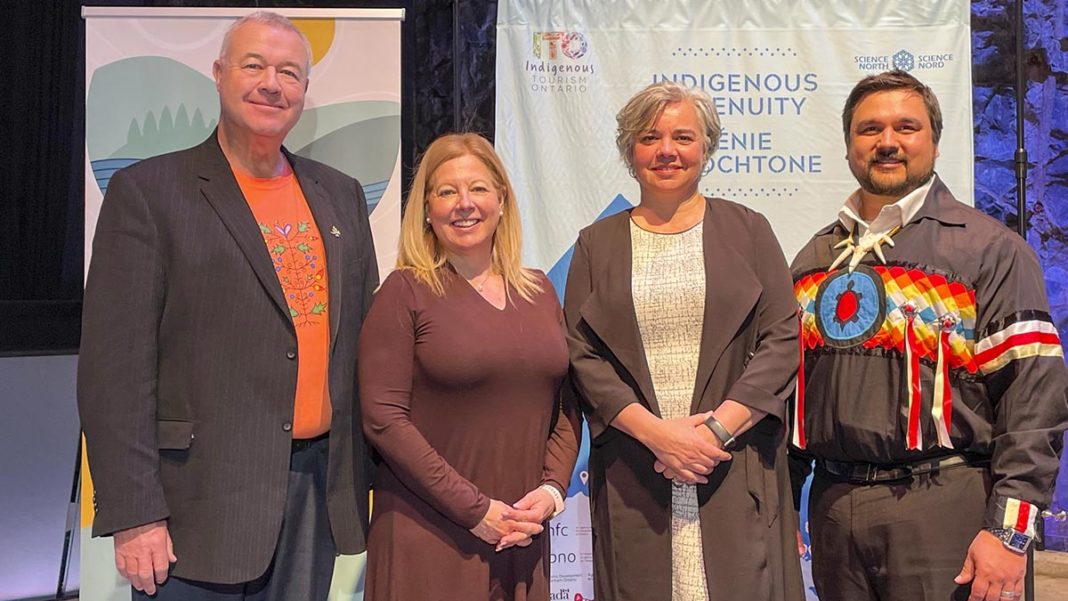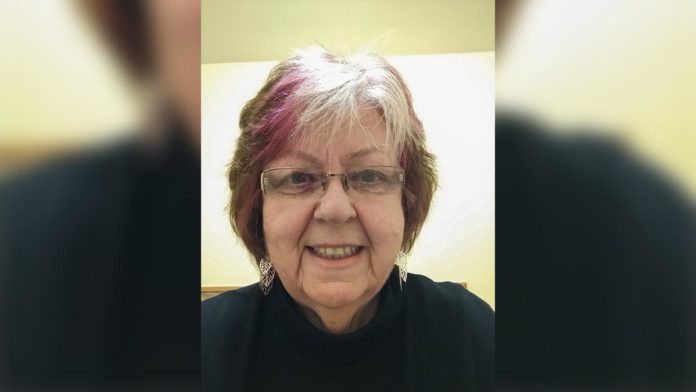SUDBURY—There are few areas of the nation’s economy hit harder by the pandemic than tourism, particularly in more remote areas of the North where most Indigenous tourism operators are located. On Friday, the Federal Economic Development Agency for Northern Ontario (aka FedNor) made a major investment in the sector.
During a ceremony at Science North, Sudbury MP Viviane Lapointe, on behalf of the Honourable Patty Hajdu, minister of Indigenous services and minister responsible for FedNor, announced tourism investments totaling $3,862,756 for four projects designed to support Indigenous communities and tourism businesses, enhance tourism offerings and accelerate recovery efforts across Northern Ontario.
The funding was provided through FedNor’s Northern Ontario Development Program and Tourism Relief Fund and is expected to create and maintain more than 180 jobs, while helping to generate more than $100 million in economic benefits for the region’s tourism sector.
“Tourism is a key sector in Northern Ontario and is essential to the economy of our region and to Canada,” shared Minister Hajdu, through MP Lapointe. “Today’s funding will protect and save jobs, support businesses and bolster regional recovery efforts. Northern Ontario is a fabulous place to visit to experience Indigenous culture and many unique destinations. I look forward to welcoming tourists to this beautiful region.”
“Today’s announcement will help our tourism sector launch a strong recovery and enjoy sustainable growth, while supporting more than 180 jobs in Indigenous communities and municipalities across Northern Ontario,” said MP Lapointe. “Through intensified support for tourism and key sectors of the economy, we are further positioning Greater Sudbury and the entire region as a world-class destination with so many experiences, attractions and wide-open spaces to discover.”
“Indigenous Tourism Ontario (ITO) is extremely proud to be working very closely with FedNor to directly support Indigenous tourism operators, while creating new opportunities within the sector,” said Kevin Eshkawkogan, president and CEO of ITO. “We believe this type of mutually beneficial regional collaboration is what will lead to a renewed, rejuvenated and prosperous tourism recovery for all.”
“Science North has been a key tourism and economic driver in Northern Ontario for nearly 40 years, collaborating with partner attractions to increase access to exciting new science and cultural experiences,” said Jennifer Booth, Science North interim CEO. “This strong show of support demonstrates confidence in the work we do by supporting our recovery and helping us kick-start a resurgence in home-grown tourism that will lead to economic recovery across the region.”
Canada’s tourism sector is essential to the Canadian economy, easily exemplified as prior to the COVID-19 pandemic the sector was generating $102 billion in annual economic activity, with 1.8 million jobs and accounted for over two percent of Canada’s GDP.
Of the total funding announced, ITO will receive $2,162,756 to support tourism recovery efforts in more than 50 Indigenous communities. The funding is also helping ITO, in partnership with Science North, to launch the Indigenous Ingenuity travelling exhibit.
The remaining $1.7 million will allow Science North to implement its three-year COVID-19 Recovery Plan and roll out the Great Northern Ontario Roadshow, a series of more than 50 flagship events designed to highlight incredible opportunities for cultural, art, heritage, culinary and recreational tourism that exist in the region.
“The Northern funding envelope for Indigenous tourism operators’ projects tops out at $600,000, while the southern Ontario portion is $2 million,” shared Mr. Eshkawkogan. ITO is deeply involved in the vetting and distribution of the funding.
Key to the ITO approach is a recognition that there is no one-size-fits-all set of parametres for the funding of projects in the North. “There will be many ongoing discussions,” noted Mr. Eshkawkogan. “It is critically important that the projects are something that the operators themselves feel comfortable in delivering and fit their requirements.”
Not exactly (or always) micro-businesses in their own right as the projects may well be additions to existing operations, the funding will not necessarily only flow to band-initiated projects. “That’s a perception we had to get past,” said Mr. Eshkawkogan. “This is about encouraging Indigenous tourism operators to create and expand operations to meet a growing global appetite for Indigenous tourism.”
It is critical for science centres, museums and attractions in the region to provide engaging, culturally relevant content that involves more Indigenous peoples in tourism and outreach experiences. It’s also important to provide non-Indigenous audiences with opportunities to experience authentic Indigenous cultural tourism experiences.
‘The Indigenous Ingenuity: Timeless Inventions’ exhibition is produced by the Montreal Science Centre and stands as a milestone in the presentation of Indigenous culture in Canada and was developed in collaboration with over 100 contributors, including deep, pan-national consultation with Indigenous peoples and communities,” said Mr. Eshkawkogan during the announcement. “Working in partnership with Science North the development of the customized Indigenous Ingenuity travelling exhibit and Northern Ontario tour will reach 50 communities across the province starting this September to June 2024.”
Mr. Eshkawkogan said that the exhibition “will improve capacity and investment readiness in Northern Ontario communities by providing a platform through which Indigenous tourism operators can market their experiences to a wider range of audiences.”
Through the program, tourism operators will work with ITO to develop new events and experiences to be marketed alongside the travelling exhibition, leading to increased visitation at those businesses and making local and tourism audiences more aware of the authentic Indigenous experiences available in Northern Ontario.
ITO is also introducing new methods of tourism activity with their augmented reality application and virtual reality experiences.
Although $600,000 is a nice chunk of change, when spread across the more than 50 communities in the North the competition may be fierce, so those hoping to get on board are advised to get their applications in as soon as possible.
“I am not usually an optimist,” laughed Mr. Eshkawkogan, “that’s not really my job, but I must say that this funding is a welcome breath of air. If this was 15 years ago, we would not be having this conversation.”





